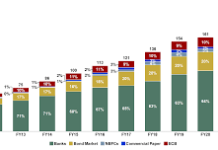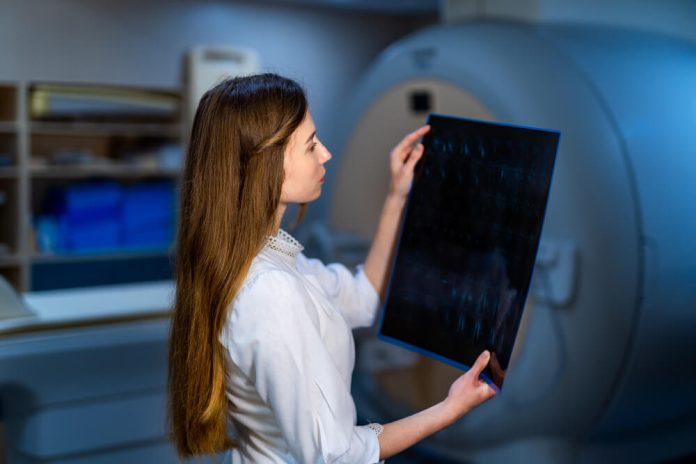In a groundbreaking development, researchers at Dana-Farber Cancer Institute have created a method to detect inflammation throughout the body using positron emission tomography (PET) imaging. This advanced PET probe targets CD45, a unique marker found abundantly on all immune cells but not on other cell types, making it an ideal candidate for precise inflammation detection.
The innovative probe provides high sensitivity and selectivity in identifying inflammation, which plays a crucial role in a variety of diseases. This breakthrough could have far-reaching implications for diagnosing, monitoring, and treating chronic conditions linked to excessive or prolonged inflammation, including cancer, cardiovascular diseases, and autoimmune disorders.
How the CD45 PET Probe Works
The newly developed PET probe targets CD45, which is exclusively expressed on immune cells. This marker’s presence on immune cells, combined with its absence from other cells, allows for incredibly clear imaging of immune system organs like the bone marrow, spleen, and lymph nodes in healthy animals.
When used in disease models, the probe efficiently identifies areas of inflammation, such as the colon in inflammatory bowel disease (IBD) and the lungs in acute respiratory distress syndrome (ARDS). By offering high-resolution images, the CD45-PET probe provides a non-invasive way to track inflammation without the need for invasive tissue biopsies.
Correlation Between Inflammation Severity and Imaging Results
One of the significant findings from the research is the ability of the CD45-PET probe to accurately correlate the severity of inflammation with both microscopic tissue analysis and clinical symptoms.
This validation makes it an invaluable tool in assessing inflammation levels and tracking disease progression in a variety of conditions, including cancer and autoimmune diseases.
Furthermore, the probe has shown potential in detecting inflammation in specific body regions, offering a more targeted approach to diagnosing diseases that are associated with inflammation.
Potential for Early Detection in Graft-Versus-Host Disease
In addition to detecting common inflammatory conditions, the researchers also tested the CD45-PET probe in animal models of graft-versus-host disease (GVHD). This condition, which often occurs after bone marrow transplants, can be difficult to detect early.
However, the CD45-PET probe demonstrated an ability to detect GVHD at its early stages, pinpointing inflammation in affected organs. This capability opens the door for earlier diagnosis and more effective intervention, potentially improving patient outcomes for individuals undergoing bone marrow transplants.
Human CD45-PET Probe: A Step Toward Clinical Applications
Building on the success of the animal models, the researchers also developed a human version of the CD45-PET probe. In initial tests using a humanized mouse model, the human CD45-PET probe showed promise in identifying human immune cells, further validating its potential for clinical use.
The Dana-Farber research team is now working toward initiating clinical trials to confirm the effectiveness of the human CD45-PET probe. If successful, this tool could have a wide range of clinical applications, such as:
- Guiding the selection of anti-inflammatory treatments: By accurately identifying areas of inflammation, physicians can make more informed decisions about the most appropriate therapies.
- Monitoring responses to anti-inflammatory medications and cancer immunotherapies: The probe could track how well patients are responding to ongoing treatments.
- Aiding in the diagnosis of inflammatory conditions: This could include chronic diseases like cardiovascular diseases, diabetes, and cancer, where inflammation is a key contributing factor.
The Importance of Detecting Inflammation Early
Inflammation is a critical component of the immune system’s defense against infections and diseases. However, when it becomes chronic or excessive, it can lead to various long-term health problems.
Conditions such as cardiovascular diseases, cancer, diabetes, and autoimmune disorders are all linked to persistent inflammation, and detecting these early can significantly improve treatment outcomes.
Currently, no reliable non-invasive tools exist to detect and locate inflammation within the body with high precision. The CD45-PET probe fills this gap, providing a novel approach to inflammation imaging that is not only accurate but also non-invasive.
Clinical Validation and Future Applications
The next step for the Dana-Farber team is to validate the human CD45-PET probe in clinical trials. If successful, this breakthrough tool could change how physicians approach the diagnosis and treatment of inflammatory diseases.
Beyond inflammation, the probe could enhance our understanding of how immune cells respond in various conditions, potentially transforming cancer immunotherapy and other areas of medicine.
The CD45-PET probe detects inflammation with high sensitivity and selectivity. It could become a standard tool in clinical practice. This would help physicians offer better, more personalized treatments for patients with chronic inflammatory diseases.
I hope you find the above content helpful. For more such informative content, please visit Medtechreporter.











